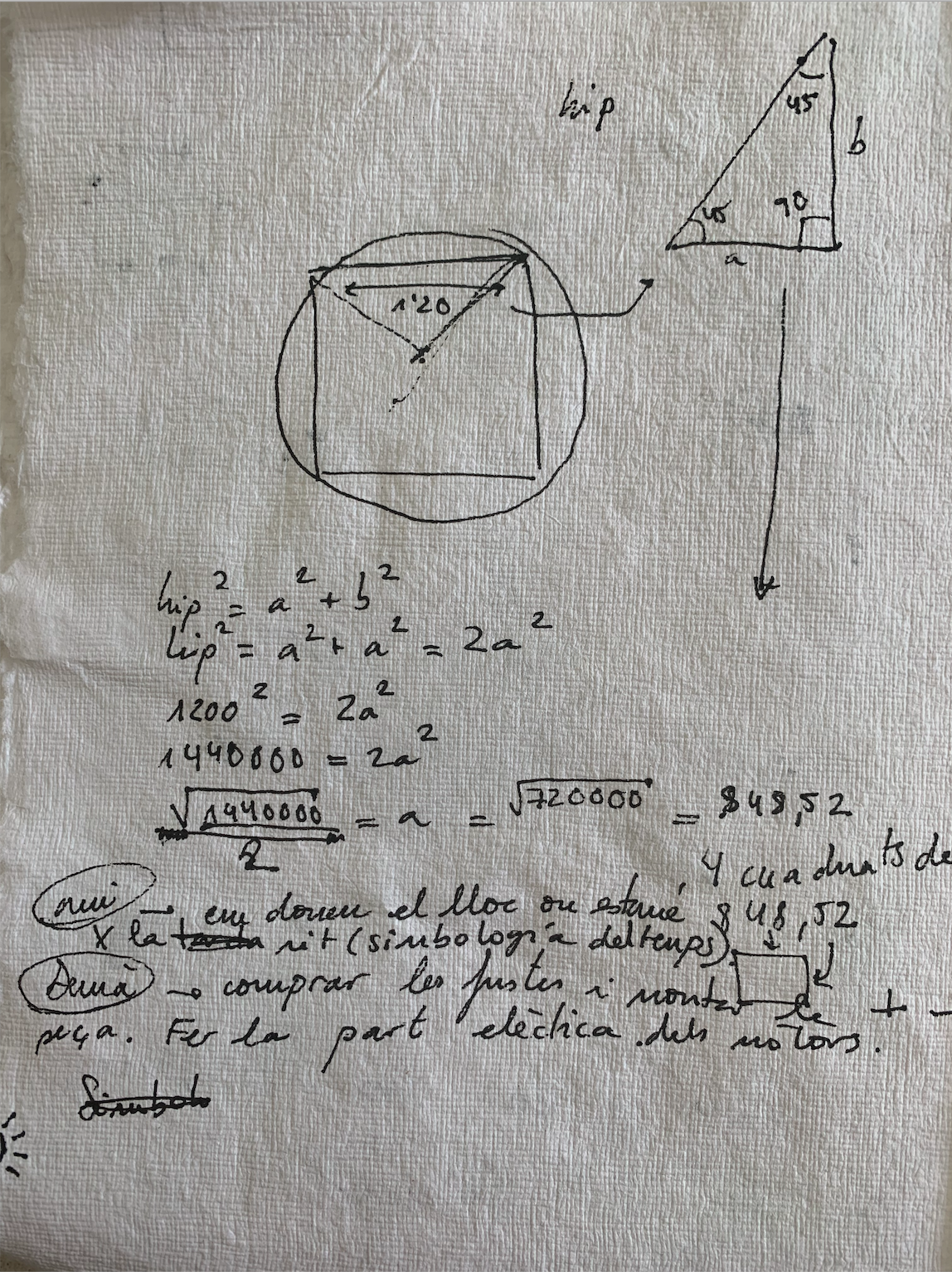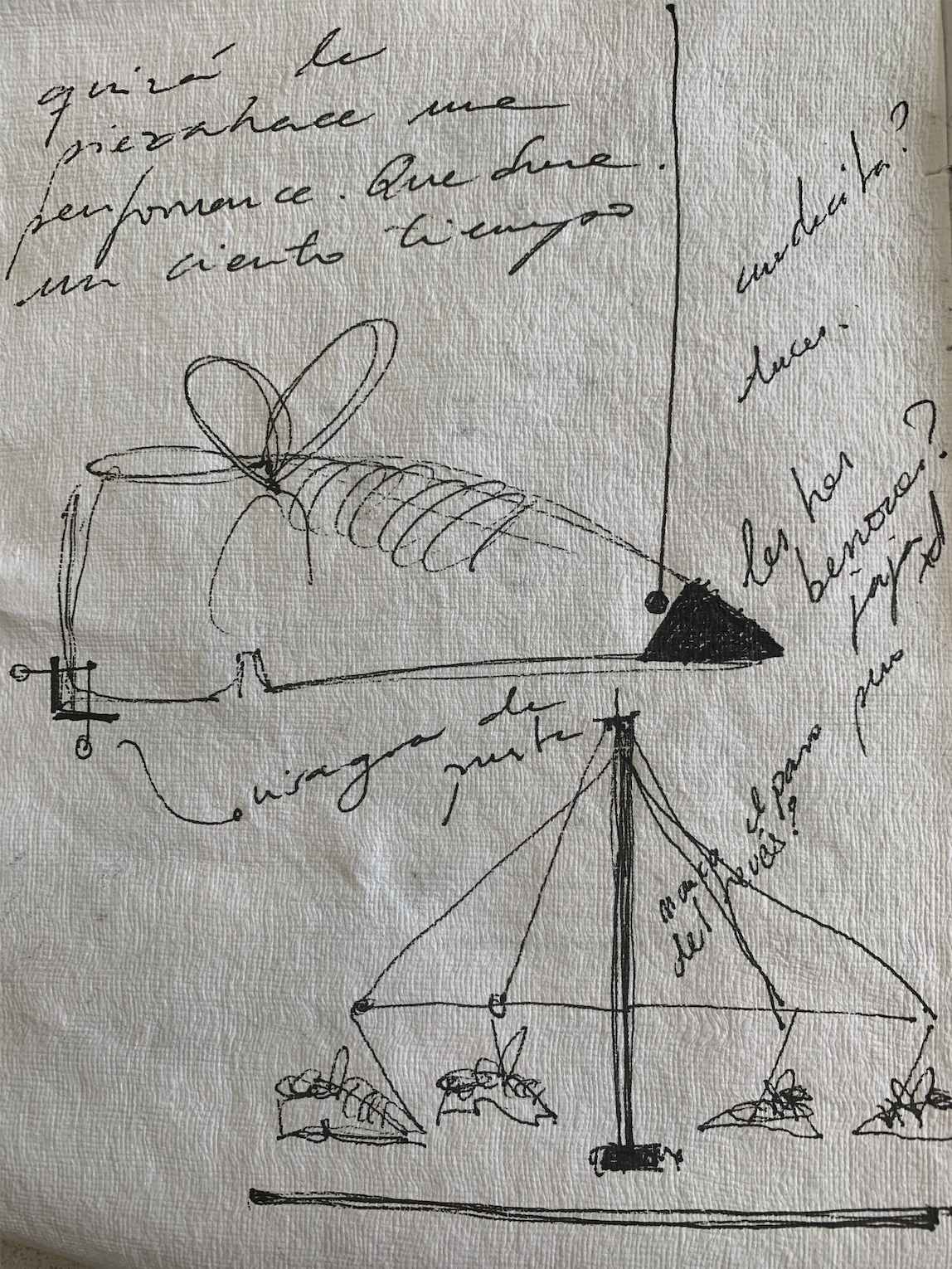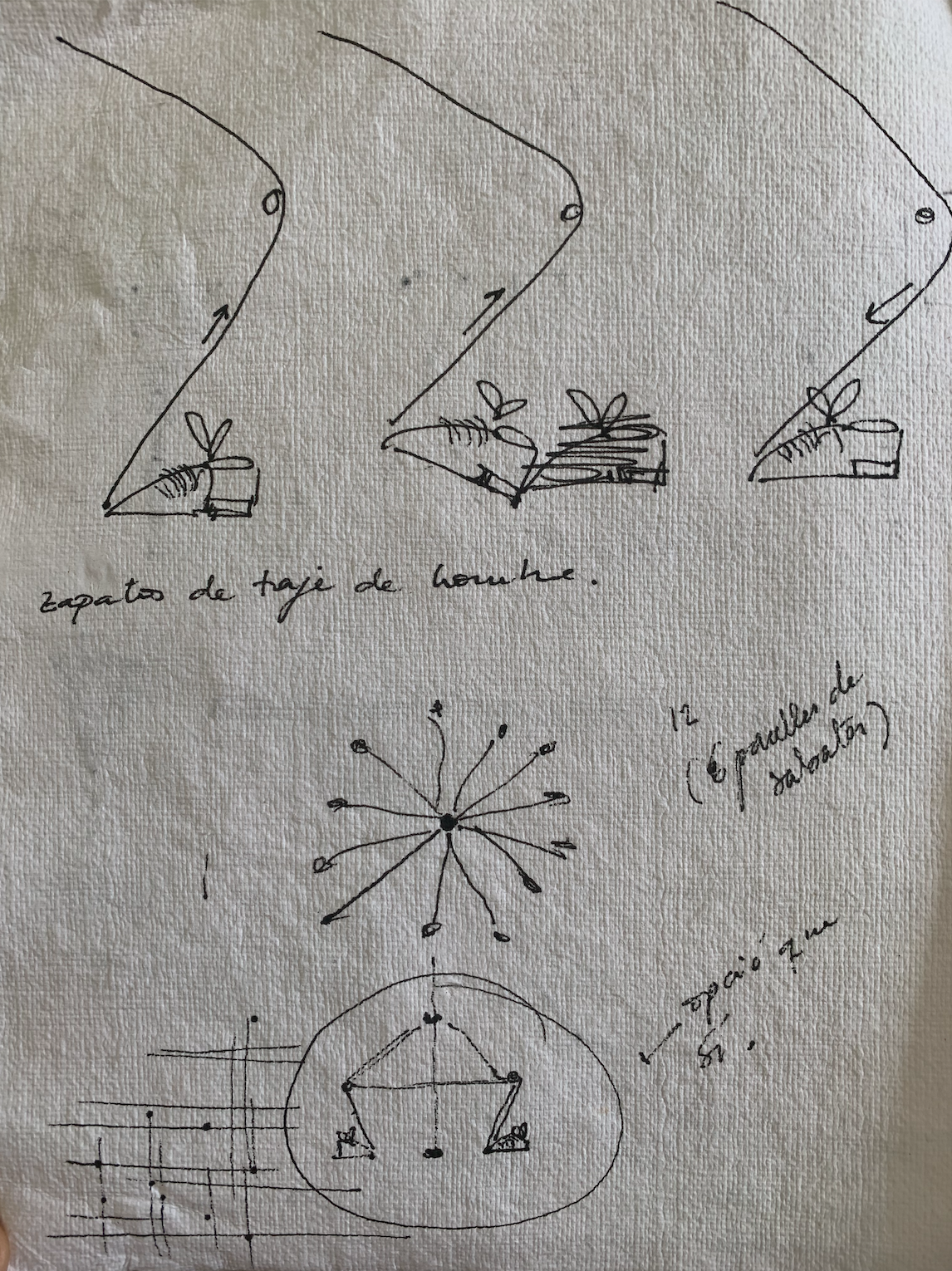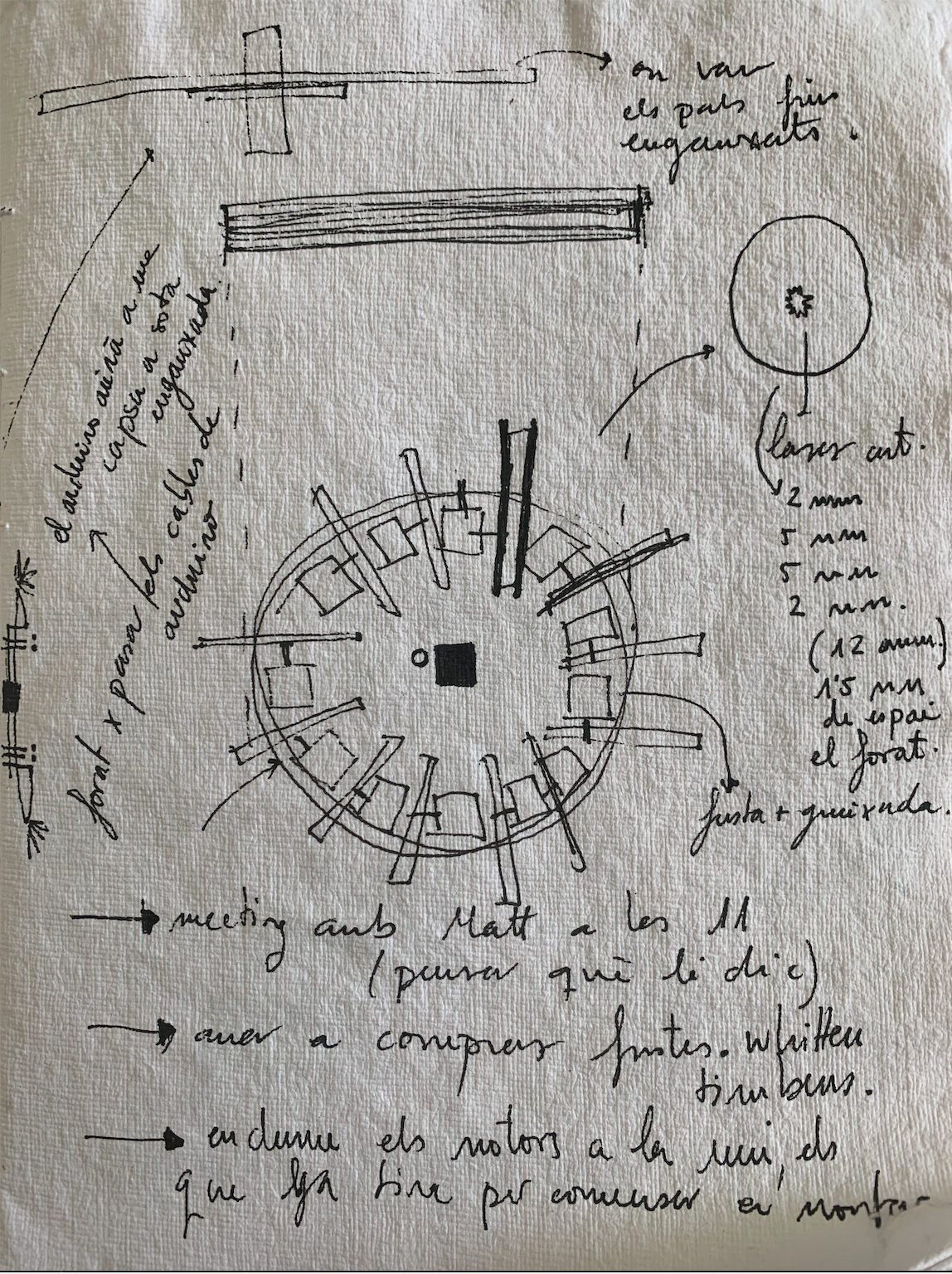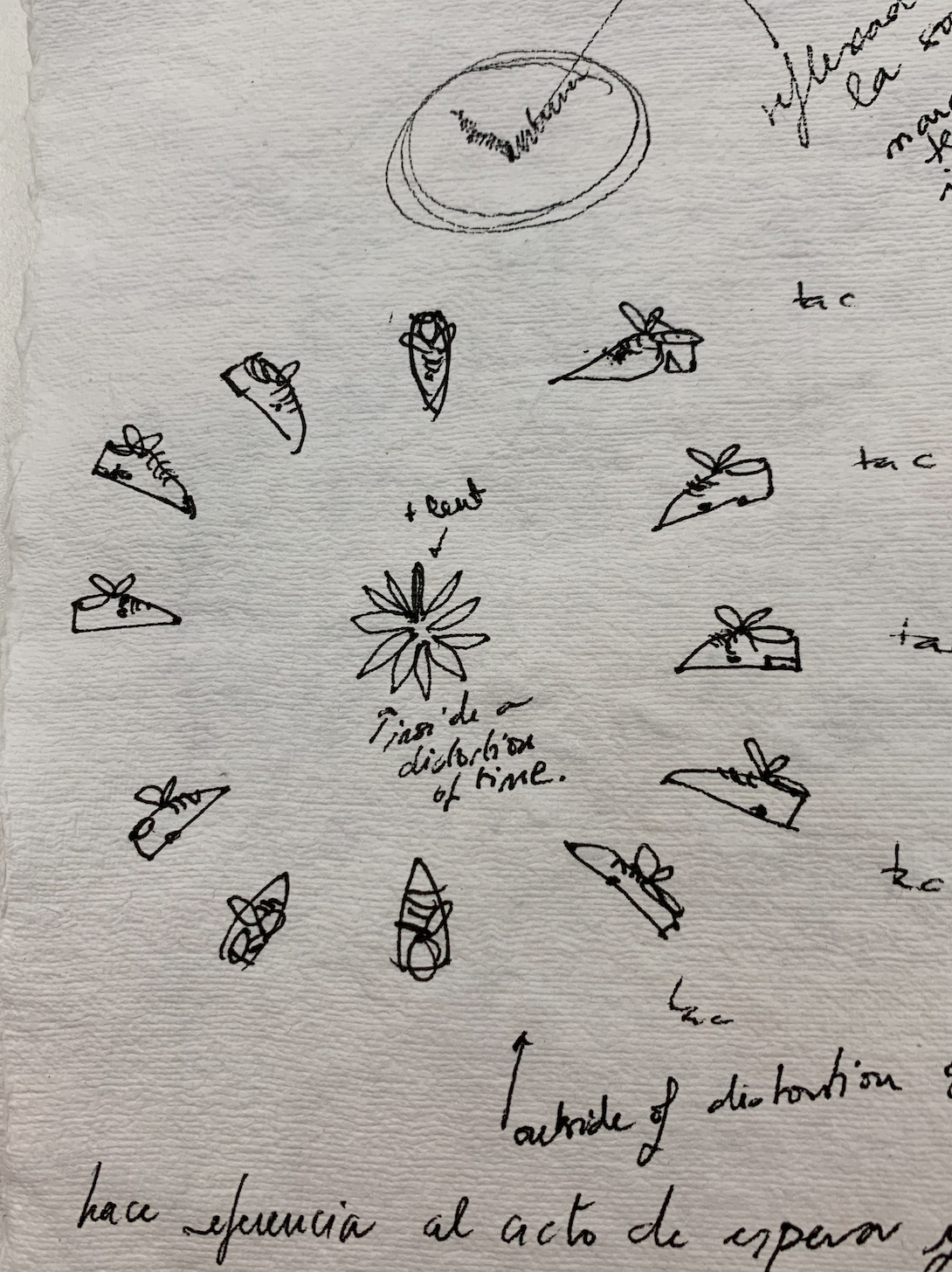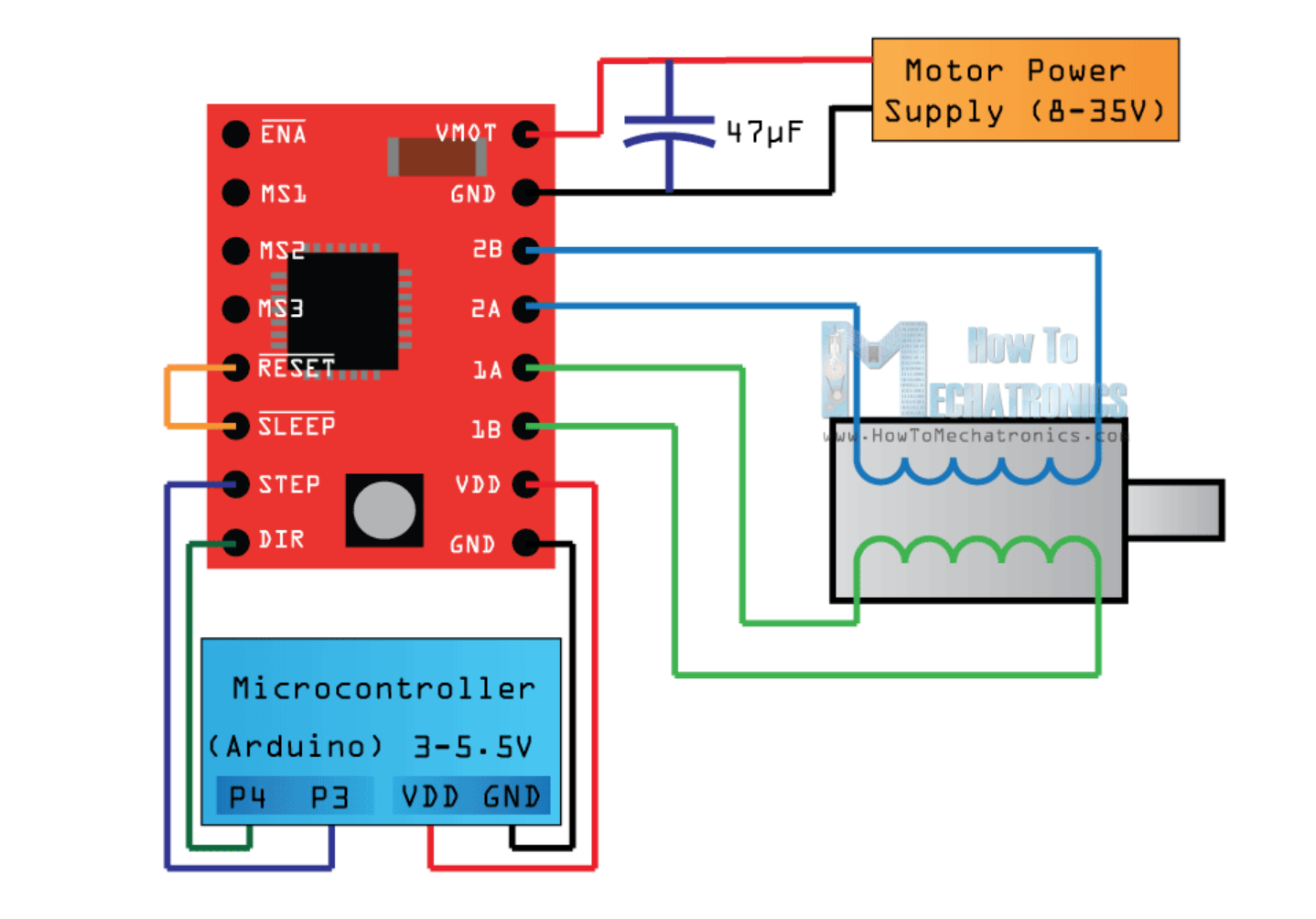"Marca el paso del tiempo pero con los pies"
"Mark the passing of time but with you feet"
That thing that we can’t grasp or see but it’s effect on matter. Time. Time is crystalized through matter; therefore, without matter it doesn’t come into being. We, as matter, are active creators of it. There is no real time out there happening that we can measure. We mark the passing of time with our own feet, as we walk and as we exist. And when we wait, we insatiably hit the ground with our feet as if we could make the time go by faster. And so, the machine, as matter, does. But it does it in her own way, as we all do.
produced by: Julia Creuheras
The concept
This piece is a reflection on time and how humans cope with it. I believe that time is crystallized through matter; out there in the empty universe time doesn’t exist as it doesn’t have a body to habit. So we, as matter are active creators and shapers of it. The heavier the mass is, the more gravity and the slower the time goes by.
We also create the concept of time in out brain by comparing the moment before with the moment after, but it is actually always now. As Niestche said once, “When someone hides something behind a bush and looks for it again in the same place and finds it there as well, there is not much to praise in such seeking and finding.” (Nietzsche, 1870). We created the clock, hided it behind a bush, found what the clock said and took it as a truth.
We believe that there is a universal and objective passing of time happening that we can measure without understanding that we are actively with our body (as matter) and with our brain (consciousness) creating it. We have a Platonian idea that time Is and we try to bring this idea to the floor with our clocks. “His method is to treat man as the measure of all things, but in doing so he again proceeds from the error of believing that he has these things [which he intends to measure] immediately before him as mere objects. He forgets that the original perceptual metaphors are metaphors and takes them to be the things themselves.” (Nietzsche, 1870).
I also based this project on a play called “Waiting for Godot” by Samuel Beckett. During the play, the two main characters are waiting for a person called Godot which is a metaphor for God. But the character never comes, and for the whole play, the actors are performing the waiting and the passage of time. When we are waiting and killing time, so many things happen that we don’t even consider as relevant, because we are waiting for something else to happen.
The design
The machine has 12 shoes, which are a metaphor for a clock. Each of them taps on the floor every second instead of every hour. Inside a clock’s engine, the movement of the gears, mark the passage of time; resulting that the passing of time is just a movement. The shoes move and mark the passage of time but in their own way. Instead of marking the hours, they mark the seconds.
Whenever people are nervous or waiting for time to go by, they tap on the floor with their feet, and this is why I used shoes to mark the passage of time. To show how we dilate or contract time by being bored or anxious or peaceful (when we are bored time goes by slower but it’s just the perception of it). The machine is a creator of time and she does it in her own way, as we all do.
On the base there are the twelve shoes and right above it, there are 12 motors and gears that allow the tapping movement to happen. I used wood and made the whole structure of the motors and gears to be visually important to give it a more heavy and organic look. I wanted to bring the idea of time as a universal and objective thing back to the ground and to do it I needed a heavy and organic structure. When I say that I needed to bring it back to the ground I mean that I wanted the viewer to understand that time happens within the matter, that time exists through us but that there is no time out there happening, we make it become real. Time is within and around us (us as matter). I also wanted to focus on the fact that the one (the mechanism) that marks the time is the creator of it.
The interaction
I didn’t make it to be interactive because I wanted the machine to be an enclosed system; she had to create her own passing of time independently from the viewer. I needed a very easy and clear movement of the shoes tapping on the floor every second. Therefore, adding interaction to it would make the machine step away from the original concept. I also wanted to step away from making an entertaining and playful piece that would entertain the viewer for a little while. Going back to the “Waiting for Godot” I wanted the piece to be boring and and to make the viewer be bored to make the viewer understand that to be bored and to be waiting is an action in itself and is so enriching to be able to stay still without anything to do. As many things that when being in a rush wouldn’t be visible, suddenly flourish.
The technical process
First of all I bought the 12 bipolar Stepper Motors with their respective 4 wires and 12 A4988 Stepper Motor Driver for each of them. Plugged them into an Arduino Mega board because I needed loats of outputs. And wired them as shown in the picture below. I also used a 12V power supply for the motors.
To convert the spinning movement of the motor into a vertical I made a little mechanism that would pull a rope up and down to move the shoes vertically and also to reduce the torque of the motor and make it more powerfull. This is shown in the pictures below.
Self evaluation
Looking at the overall of the project I feel very satisfied. I encountered many problems when trying to find the best way of moving the shoes up and down. The big torque of the motor and the low power of the motors made them not powerfull enough to lift the shoes but found a way of making them more powerfull with the system explained before. Conceptually wise I also feel satified because at every moment I stayed loyal to my intentions and kept my concept simple (I didn't get seduced by the tech-demo and make it super interactive, not because I am against it but because the concept behind the piece didn't require it). However, If I could take my project further I would play with the rythm of the tapping of the shoes.
































































